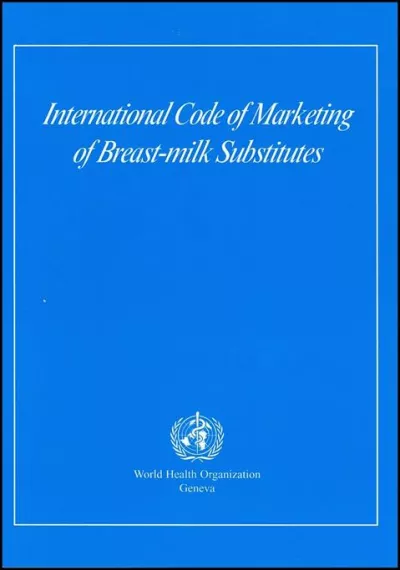International Code of Marketing of Breast-Milk Substitutes and Resolutions
International Code
What Is The International Code
This is an introduction to the provisions of the International Code and Resolutions
The World Health Organization and UNICEF have for many years emphasized the importance of maintaining the practice of breastfeeding, and of reviving the practice where it is in decline, as a way to improve the health and nutrition of infants and young children. A variety of factors influence the prevalence and duration of breastfeeding.
The 27th World Health Assembly in 1974 noted the general decline in breastfeeding related to different factors including the production of manufactured breast-milk substitutes and urged Member countries to review sales promotion activities on baby foods and to introduce appropriate remedial measures, including advertisement codes and legislation where necessary.
The 33rd World Health Assembly, en May 1980, endorsed in their entirety the statement and recommendations agreed by consensus at this joint WHO/UNICEF meeting and made particular mention of the recommendation that “There should be an international code of marketing of infant formula and other products used as breast-milk substitutes”.
In May 1981 the Health Assembly debated the issue after it had been introduced by the representative of the Executive Board. It adopted the code, as proposed, on 21 May by 118 votes. (WHO)
The International Code of Marketing of Breastmilk Substitutes was adopted by the World Health Assembly in 1981 as a “minimum requirement” to protect infant health and is to be implemented “in its entirety.” This document introduces the key provisions of the International Code and subsequent, relevant Resolutions of the World Health Assembly.
What Is The International Code
This is an introduction to the provisions of the International Code and Resolutions
The World Health Organization and UNICEF have for many years emphasized the importance of maintaining the practice of breastfeeding, and of reviving the practice where it is in decline, as a way to improve the health and nutrition of infants and young children. A variety of factors influence the prevalence and duration of breastfeeding.
The 27th World Health Assembly in 1974 noted the general decline in breastfeeding related to different factors including the production of manufactured breast-milk substitutes and urged Member countries to review sales promotion activities on baby foods and to introduce appropriate remedial measures, including advertisement codes and legislation where necessary.
The 33rd World Health Assembly, en May 1980, endorsed in their entirety the statement and recommendations agreed by consensus at this joint WHO/UNICEF meeting and made particular mention of the recommendation that “There should be an international code of marketing of infant formula and other products used as breast-milk substitutes”.
In May 1981 the Health Assembly debated the issue after it had been introduced by the representative of the Executive Board. It adopted the code, as proposed, on 21 May by 118 votes. (WHO)
The International Code of Marketing of Breastmilk Substitutes was adopted by the World Health Assembly in 1981 as a “minimum requirement” to protect infant health and is to be implemented “in its entirety.” This document introduces the key provisions of the International Code and subsequent, relevant Resolutions of the World Health Assembly.
A unique instrument
The International Code is a unique and indispensable tool to protect and promote breastfeeding – an equally unique but threatened practice – and to ensure that marketing of breastmilk substitutes, feeding bottles and teats is appropriate. The International Code was the first of its kind, an internationally adopted and endorsed basic minimum requirement to protect healthy practices in respect of infant and young child feeding. Although less binding than a treaty or a convention, the International Code is an international public health recommendation to regulate the marketing of breastmilk substitutes, adopted by the World Health Assembly (WHA).
Although WHA recommendations are generally not binding, they “carry moral or political weight, as they constitute the judgement on a health issue of the collective membership of the highest international body in the field of health.”
(Quote: Shubber, S. The International Code, Digest of Health Legislation, Vol. 36, No. 4, 1985, p. 884).
The Implementation and Global Impact of the International Code
The WHA comprises the Ministers of Health of the worlds governments, and their advisers, eminent experts in the field of public health or specific health issues. Although the United States voted against the International Code in 1981, thirteen years later the Clinton Administration endorsed the Code in the WHA Resolution of 1994, giving the International Code the support of every Member State of the WHA.
The International Code was prepared by the World Health Organisation (WHO) and the United Nations Childrens Fund (UNICEF) after a process of widespread consultation with governments, the infant feeding industry, professional associations and NGOs. It is weaker than the ideal and some definitions and articles are open to interpretation. The industry has used imaginative methods to circumvent certain elements.
When the International Code was adopted under WHA Resolution 34.22 it was recognised that experience and new scientific thinking would require the issue to be re-visited. The Director General of WHO was charged with producing a report in even years on the state of implementation and to give suggestions for further action. Accordingly Resolutions have been adopted clarifying and amplifying the International Code. These subsequent, relevant Resolutions enjoy the same status as the International Code itself.
The International Code and Resolutions are to be implemented in a variety of ways:
- Member States of WHA are to implement the International Code in national measures in its entirety as a minimum requirement. They should similarly implement subsequent WHA Resolutions.
- Manufacturers and distributors are called on to abide by the International Code independently of other measures.
- NGOs, professional groups, institutions and individuals are called on to report violations.
- Other international bodies, such as the FAO/WHO Codex Alimentarius Commission, are called on to support and promote implementation of the International Code.
- The provisions of the International Code and Resolutions have been incorporated into other international agreements such as the Innocenti Declaration and parts of it in directives of the European Union.
- Implementation of the International Code and Resolutions is recognised as one measure for governments to take to fulfil a countrys obligations under the Convention of the Rights of the Child
More: Publications
Breastfeeding Advocacy Toolkit
Build your knowledge base with a comprehensive set of information and tools for breastfeeding advocates.



